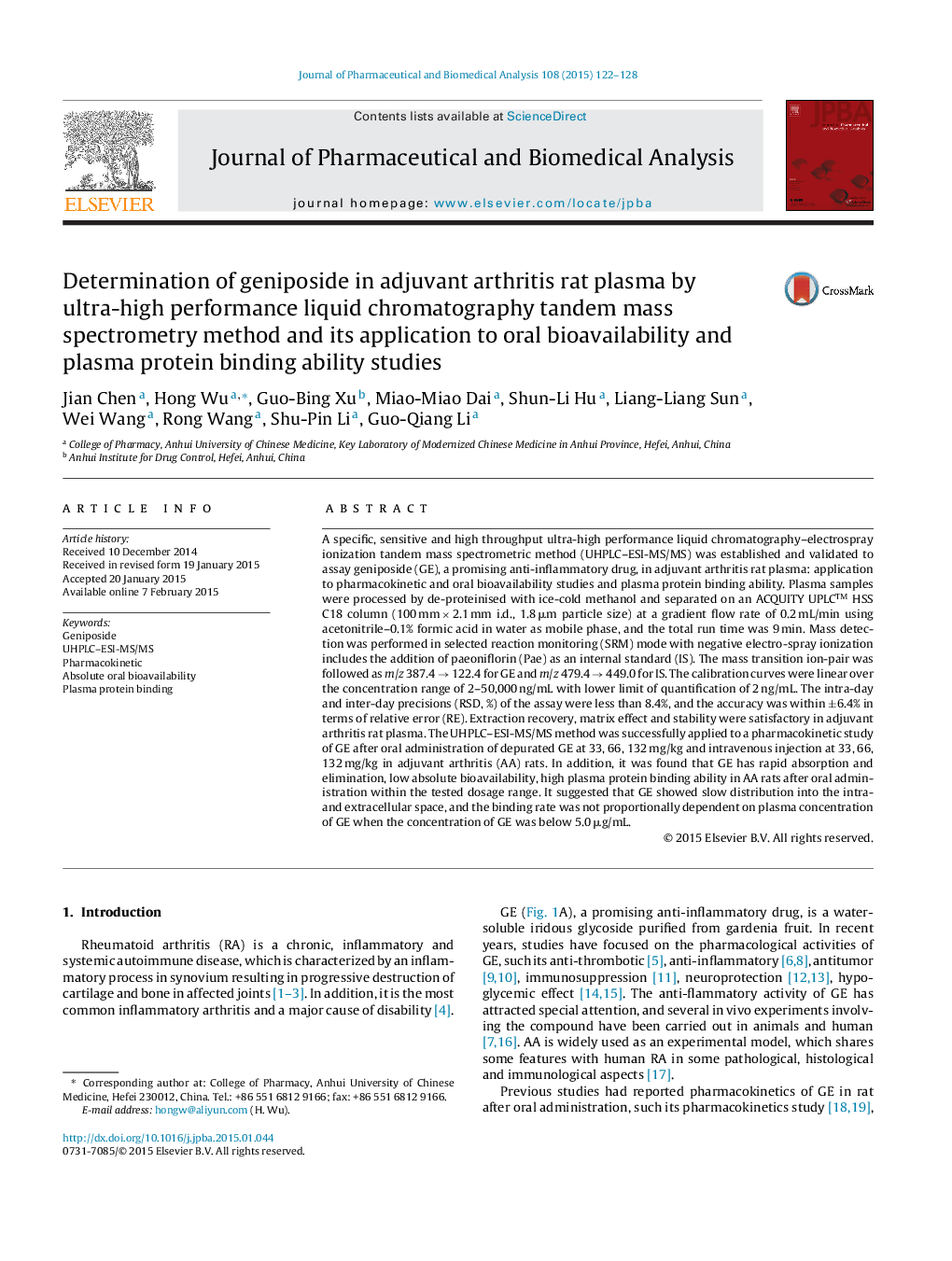| Article ID | Journal | Published Year | Pages | File Type |
|---|---|---|---|---|
| 1220894 | Journal of Pharmaceutical and Biomedical Analysis | 2015 | 7 Pages |
•A LC–MS/MS method with internal standard was successfully developed to determine GE in rat plasma.•Oral bioavailability of geniposide was studied in rats with adjuvant arthritis.•Protein binding ability of GE was studied in rats with adjuvant arthritis.•The plasma binding rate was not proportionally dependent on plasma concentration of geniposide.
A specific, sensitive and high throughput ultra-high performance liquid chromatography–electrospray ionization tandem mass spectrometric method (UHPLC–ESI-MS/MS) was established and validated to assay geniposide (GE), a promising anti-inflammatory drug, in adjuvant arthritis rat plasma: application to pharmacokinetic and oral bioavailability studies and plasma protein binding ability. Plasma samples were processed by de-proteinised with ice-cold methanol and separated on an ACQUITY UPLC™ HSS C18 column (100 mm × 2.1 mm i.d., 1.8 μm particle size) at a gradient flow rate of 0.2 mL/min using acetonitrile–0.1% formic acid in water as mobile phase, and the total run time was 9 min. Mass detection was performed in selected reaction monitoring (SRM) mode with negative electro-spray ionization includes the addition of paeoniflorin (Pae) as an internal standard (IS). The mass transition ion-pair was followed as m/z 387.4 → 122.4 for GE and m/z 479.4 → 449.0 for IS. The calibration curves were linear over the concentration range of 2–50,000 ng/mL with lower limit of quantification of 2 ng/mL. The intra-day and inter-day precisions (RSD, %) of the assay were less than 8.4%, and the accuracy was within ±6.4% in terms of relative error (RE). Extraction recovery, matrix effect and stability were satisfactory in adjuvant arthritis rat plasma. The UHPLC–ESI-MS/MS method was successfully applied to a pharmacokinetic study of GE after oral administration of depurated GE at 33, 66, 132 mg/kg and intravenous injection at 33, 66, 132 mg/kg in adjuvant arthritis (AA) rats. In addition, it was found that GE has rapid absorption and elimination, low absolute bioavailability, high plasma protein binding ability in AA rats after oral administration within the tested dosage range. It suggested that GE showed slow distribution into the intra- and extracellular space, and the binding rate was not proportionally dependent on plasma concentration of GE when the concentration of GE was below 5.0 μg/mL.
Graphical abstractFigure optionsDownload full-size imageDownload as PowerPoint slide
